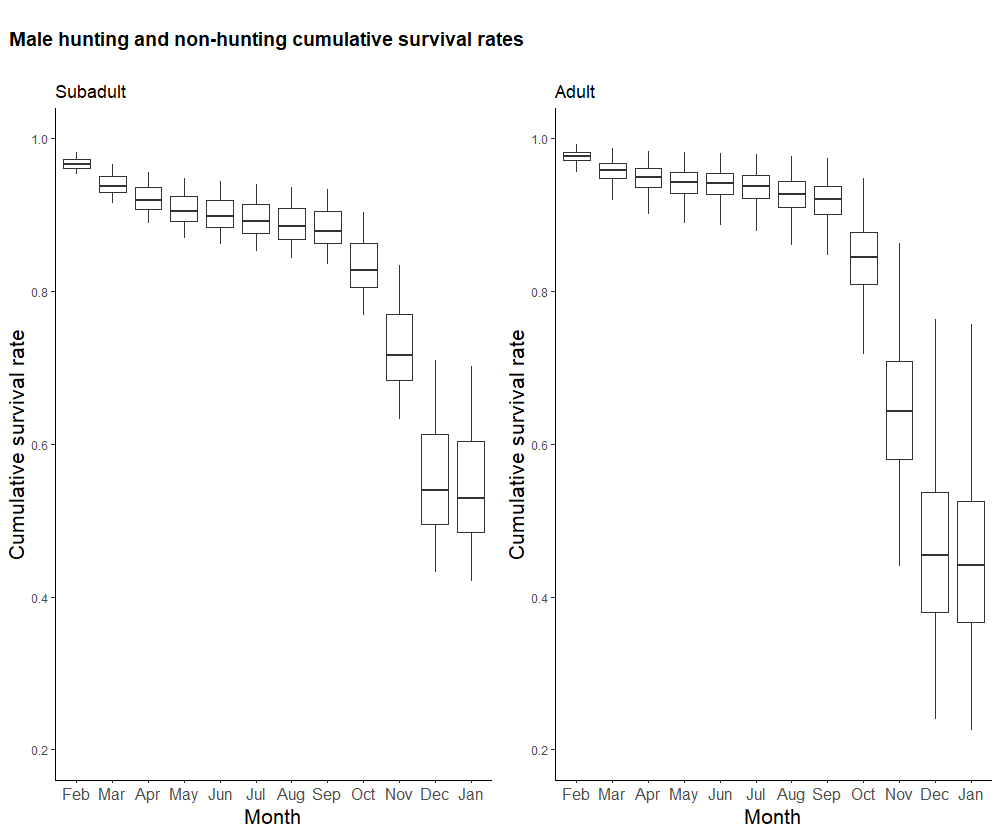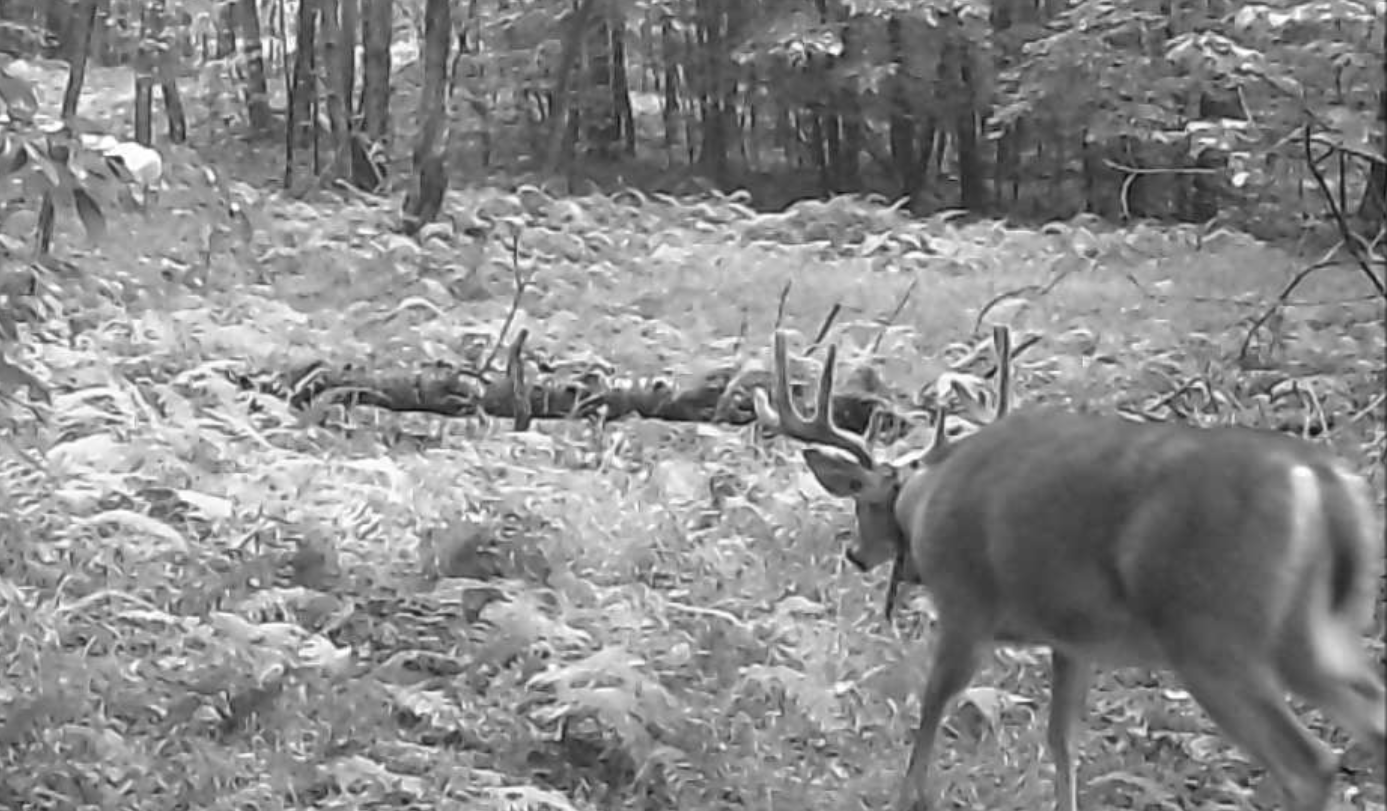What’s the chances a buck lives 3 years? When you radiocollar a deer to monitor movements and survival you need to know these things. Lifespan of the deer and the battery both play a role. Do you program the collars to get a lot of locations (every 30–60 minutes) shrinking the collar lifespan to a year, or do you get fewer locations extending the life of the collar to match a deer?
To play this lottery, we need to figure out what that deer lifespan might be. Fortunately for us in Pennsylvania, we have 19 years of data on deer survival from 12 different study areas.
We will start with males because winning that lottery is a lot easier. The graph below shows the cumulative monthly survival rate (Graph on left – Subadults are deer that will have their first set of antlers that year; Graph on right – Adults are all older deer). But you need a little context to interpret it.
We start capturing deer in January, but we really don’t have a large enough sample until February to estimate monthly survival. Hence, our “year” starts in February. That first boxplot for February shows the median for all studies (thick horizontal line), the box around it includes 50% of the survival estimates (25th to 75th percentiles), and the whiskers coming off the box are estimates within 1.5x the inter-quartile range. Any dots represent estimates that lie beyond. [If you really want to geek out on this stuff, go here!]
The second boxplot (March) represents the probability of surviving February AND March. The third boxplot represents the probability of surviving February, March, and April…and so on. The last boxplot is the probability of surviving 12 months: February through January.

The bigger the drop between months, the higher the mortality in that month. Notice the largest drops are in October, November, and December reflecting the opening of hunting seasons. The rut is in full swing in early November for archery hunters and the rifle season encompasses late November and December. Very few deer are killed in the late archery and flintlock seasons (January).
Notice that subadults (1.5-year-old males) have higher survival rates than adult males. That’s due to antler point restrictions.
So what gamble do you make on the radiocollar? If it’s an average study area in PA, I would go for the maximum number of locations in a year because more than half of the bucks will be dead by that time anyway. In two years, only about 20% are still alive.

However, it also depends on the study area! The top end of the whisker suggests that 42% of the bucks are still alive after 3 years! That would be our current study areas.
On the other hand, some of our study areas maybe only 5% would be alive after 3 years.
Maybe it’s not an easy win after all! Playing the female collar survival lottery is even more difficult…
–Duane Diefenbach
